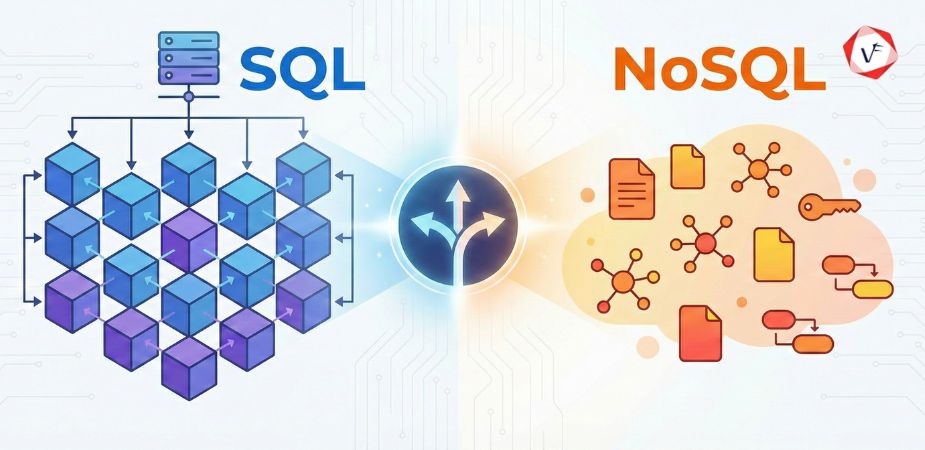- September 19, 2025 4:13 pm
- by Kevin
- September 19, 2025 4:13 pm
- by Manek

As organizations worldwide face escalating cyber threats, artificial intelligence (AI) has emerged as the cornerstone of modern cybersecurity defense. AI in cybersecurity represents a fundamental shift from traditional reactive security measures to proactive, intelligent defense mechanisms that can identify, analyze, and respond to threats with unprecedented speed and accuracy.
Machine Learning (ML): Algorithms that learn from data patterns to identify anomalies and threats
Deep Learning: Neural networks that recognize complex attack patterns
Natural Language Processing (NLP): Analysis of threat intelligence from multiple sources
Behavioral Analytics: User and entity behavior analysis for insider threat detection
Modern cybersecurity frameworks now rely heavily on AI-powered solutions to combat evolving threat landscapes where traditional signature-based detection methods prove inadequate against zero-day attacks and advanced persistent threats (APTs).
The cybersecurity industry has undergone a remarkable transformation with artificial intelligence integration. Traditional approaches relying on rule-based systems and signature detection have proven insufficient against modern cyber threats.
AI-driven cybersecurity solutions have revolutionized threat detection by introducing machine learning algorithms capable of identifying patterns and anomalies that conventional security systems miss. These systems can process vast amounts of data in real-time, analyzing network traffic, user behavior, and system activities simultaneously.
Machine learning models continuously learn from new data, adapting detection capabilities to identify emerging threats and attack vectors. Deep learning techniques have further enhanced cybersecurity systems' ability to recognize complex attack patterns and predict potential vulnerabilities before exploitation.
NLP enables security systems to analyze and interpret threat intelligence from various sources, including security reports, social media, and dark web communications. This capability allows organizations to stay ahead of emerging threats by proactively identifying potential attack campaigns and threat actor activities.
Artificial intelligence has fundamentally transformed how cybersecurity professionals approach threat detection and incident response. AI-powered security systems analyze millions of events per second, identifying subtle indicators of compromise that might escape human attention.
These systems employ sophisticated algorithms to establish baseline behaviors for networks, applications, and users, enabling detection of deviations indicating malicious activity. Behavioral analytics powered by AI can identify:
✓ Insider Threats: Unusual access patterns or data exfiltration attempts
✓ Account Takeovers: Login anomalies and credential abuse
✓ Advanced Persistent Threats: Long-term, stealthy attack campaigns
✓ Lateral Movement: Unauthorized network traversal by attackers
When threats are detected, AI systems automatically initiate containment measures, isolate affected systems, and begin remediation processes without requiring immediate human intervention. This rapid response capability is crucial for minimizing cyberattack impact and preventing lateral movement within compromised networks.
One of the most promising applications of artificial intelligence in cybersecurity lies in predictive analytics and proactive vulnerability management. AI systems analyze historical attack data, vulnerability databases, and threat intelligence to predict which assets are most likely targets.
Predictive models leverage machine learning algorithms to assess risk levels across different systems and applications, enabling organizations to prioritize security investments and remediation efforts effectively. These AI-powered risk assessment tools consider multiple factors:
• Asset criticality and business impact
• Exposure levels and attack surface analysis
• Threat landscape trends and intelligence
• Organizational context and security posture
Machine learning algorithms identify complex vulnerability chains and attack paths that traditional scanning tools might miss. AI in cybersecurity applications can predict exploitation likelihood for specific vulnerabilities based on public exploit availability, attacker interest, and organizational exposure.
AI-powered patch management systems prioritize patches based on risk assessments, compatibility considerations, and business impact analysis, helping organizations maintain optimal security postures while minimizing business operation disruptions.
Despite significant advantages, organizations face numerous challenges when implementing AI-driven security solutions. Understanding these limitations is crucial for successful deployment.
Cybercriminals increasingly develop techniques to evade AI-based detection systems by crafting attacks that exploit machine learning algorithm weaknesses. This creates an ongoing arms race between AI security systems and sophisticated threat actors.
The quality and quantity of training data represent critical factors in AI cybersecurity solution effectiveness. Biased or insufficient training datasets can lead to:
• Poor detection performance
• High false positive rates
• Reduced system credibility
• Operational inefficiencies
Many organizations struggle to integrate AI-powered security tools with existing infrastructure and workflows. The complexity of modern IT environments, combined with diverse security tools and platforms, makes seamless integration technically challenging.
The economic implications of implementing artificial intelligence in cybersecurity extend far beyond initial technology investments. Organizations adopting AI cybersecurity solutions report substantial cost savings through reduced incident response times and prevention of costly data breaches.
AI automation capabilities enable security teams to focus on strategic initiatives rather than routine monitoring tasks. Key economic benefits include:
• Reduced Manual Labor: Automated threat monitoring and response
• Faster Incident Resolution: Automated containment and remediation
• Prevention-First Approach: Proactive threat identification
• Resource Optimization: Better allocation of security personnel
The predictive capabilities of artificial intelligence cybersecurity systems help organizations avoid potential security incidents entirely, providing greater economic benefits through prevention rather than remediation.
The practical implementation of artificial intelligence in cybersecurity has yielded remarkable results across various industry sectors, demonstrating the technology's versatility and effectiveness.
Financial institutions have particularly benefited from AI-driven cybersecurity solutions, with major banks reporting significant reductions in fraud detection times and false positive rates. These systems analyze transaction patterns, user behaviors, and account activities to identify suspicious transactions in real-time.
Healthcare organizations successfully deploy AI in cybersecurity applications to protect sensitive patient data and medical records. Machine learning algorithms monitor access patterns to electronic health records, detecting unauthorized access attempts before sensitive information compromise.
Manufacturing and industrial control systems embrace artificial intelligence cybersecurity solutions to protect operational technology environments. AI systems monitor industrial networks and control systems, detecting anomalies indicating cyberattacks targeting critical infrastructure.
Government agencies worldwide invest heavily in AI-driven cybersecurity platforms to protect national security interests and citizen data, demonstrating scalability and effectiveness across large, complex IT environments with diverse security requirements.
The future of artificial intelligence in cybersecurity promises even more sophisticated and effective defense mechanisms as emerging technologies reshape the security landscape.
Quantum computing technologies are expected to both challenge and enhance AI cybersecurity capabilities, potentially rendering current encryption methods obsolete while enabling more powerful AI algorithms for threat detection and analysis.
Federated learning approaches in AI cybersecurity gain traction as organizations seek collective intelligence benefits while maintaining data privacy and security. These collaborative AI models allow threat intelligence sharing without exposing sensitive data to external parties.
Edge computing and Internet of Things security present new frontiers for AI cybersecurity applications. As more devices become connected and generate security-relevant data at network edges, AI systems must evolve to provide distributed security intelligence and real-time threat response capabilities.
AI-Powered Security Orchestration: Automated response coordination
Quantum-Resistant Encryption: Next-generation data protection
Zero Trust Architecture: AI-driven continuous verification
Autonomous Security Systems: Self-healing network infrastructure
Artificial intelligence has fundamentally transformed the cybersecurity landscape, providing organizations with powerful tools to combat increasingly sophisticated cyber threats. The integration of AI in cybersecurity solutions enables proactive threat detection, automated incident response, and predictive risk management capabilities previously impossible with traditional security approaches.
24/7 Automated Threat Detection: Continuous monitoring without human fatigue
Reduced False Positives: Machine learning improves accuracy over time
Faster Response Times: Automated containment and remediation
Predictive Capabilities: Proactive vulnerability management
Cost Reduction: Up to 40% lower breach costs
As cyber threats continue evolving, the role of artificial intelligence in cybersecurity will only become more critical for maintaining robust defense postures. Organizations seeking enhanced security capabilities should consider comprehensive AI-driven solutions as essential components of modern cybersecurity strategies.
Organizations looking to strengthen their digital assets can benefit from Vofox's professional AI/ML-powered cybersecurity services for building secure, scalable business infrastructure. Expert consultation ensures optimal implementation and maximum security effectiveness.
Contact our cybersecurity professionals today to discuss your AI security needs and implementation strategy.
Guaranteed Response within One Business Day!

What is Digital Twin Technology?

What are WebAssembly (WASM) Applications?
Code Review Best Practices: Complete Guide for 2026

Database Selection Guide: SQL vs NoSQL
AI Agents in Enterprise Software: How Autonomous AI is Transforming Business Operations